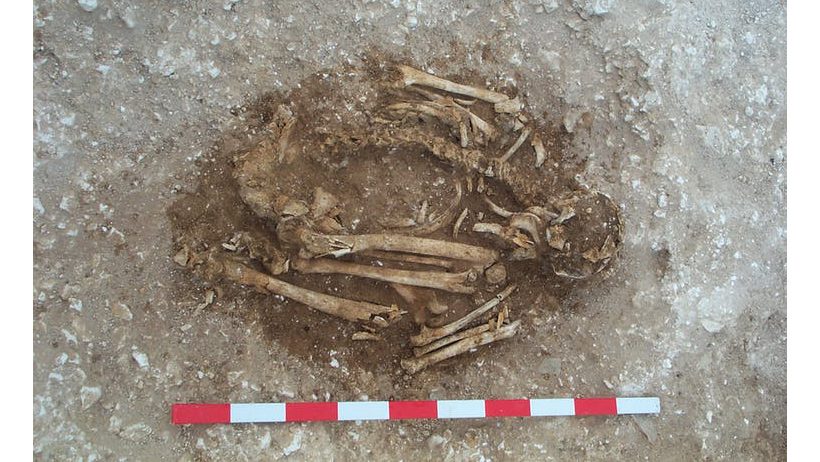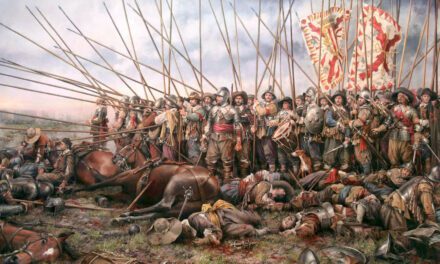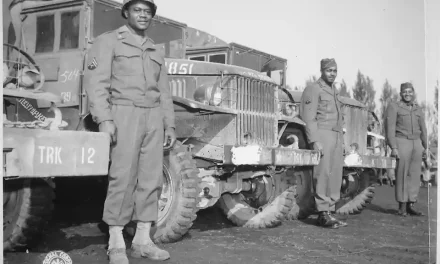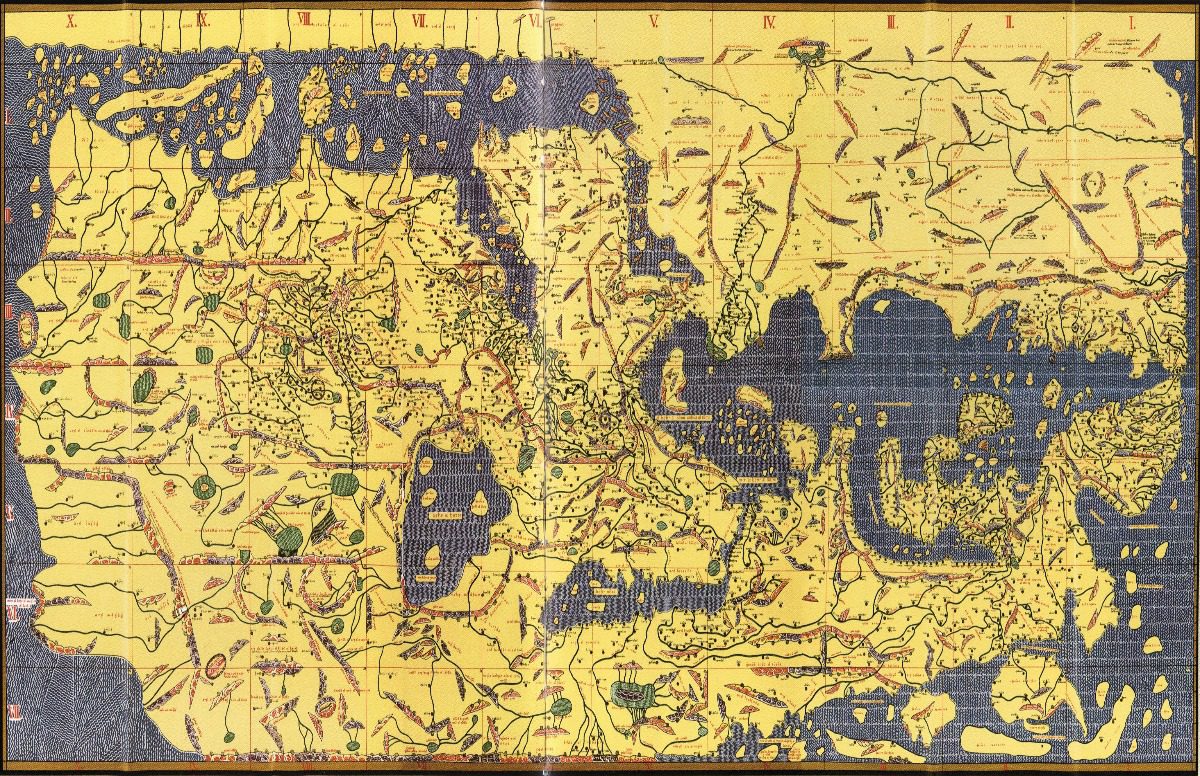Estimated reading time: 6 minutes
For a shining example of ancient warfare and the cause of the world’s first recorded peace treaty, look no further than the Battle of Kadesh.
By Madison Moulton.
The characteristics of ancient warfare are often shrouded in mystery. There is evidence of the existence of early warfare, but intricate details of battle are scarce. However, one battle stands out as the most well-documented in ancient history and a shining example of the conduct of ancient warfare – the Battle of Kadesh. Not only do we have detailed accounts of the logistics, tactics, and progression of the battle of 1274 BCE, but it also produced the world’s first recorded peace treaty, the features of which are remarkably similar to the international peace treaties of modern history.
The Lead Up to Battle
The Battle of Kadesh – like many historical battles – was fought over territory in the Middle East. The two major powers in the area were the Hittites to the North and the Egyptians to the South. With the Egyptian kingdom’s influence in decline, Pharaoh Ramesses II pursued an expansionist policy to restore the power of Egypt. Expanding North, the Egyptians pushed closer to Hittite territory, creating tension between the groups. One of the contested border areas – Kadesh – was a vital trading hub and sought after city in the region. Ramesses launched a campaign to capture this area for Egypt and came up against the Hittites in battle.
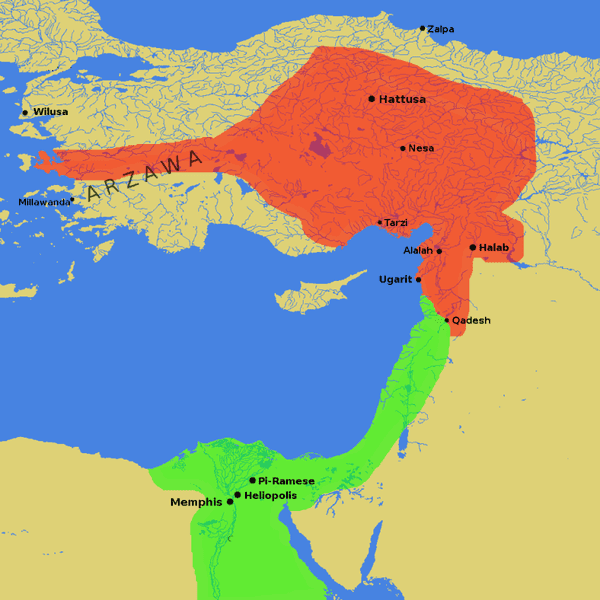
The Battle Begins
Ramesses entered the battle with an army of four divisions – Amun, Pre, Seth, and Ptah. The Hittite ruler King Muwatalli II called in the support of 19 Hittite allies from regions in Anatolia and Syria to solidify their position on the border. Both sides amassed an estimated 6000 chariots for battle – one of the biggest chariot battles in history.
Due to false intelligence from two captured Hittite spies, Ramesses believed the Hittite forces were stationed far from the city. This prompted him to march hastily toward Kadesh, where the Hittites launched a surprise attack that caught the soldiers off-guard. This first engagement is described in the Poem of Pentaur, the Egyptian record of the battle:
“But he (Muwatalli) had sent men and horses exceeding many and multitudinous like the sand, and they were three men on a chariot and they were equipped with all weapons of warfare. They had been made to stand concealed behind the town of Kadesh, and now they came forth from the south side of Kadesh and broke into the army of Pre` in its midst as they were marching and did not know nor were they prepared to fight. Thereupon the infantry and the chariotry of His Majesty (Ramesses) were discomfited before them…”
Translated by James Henry Breasted
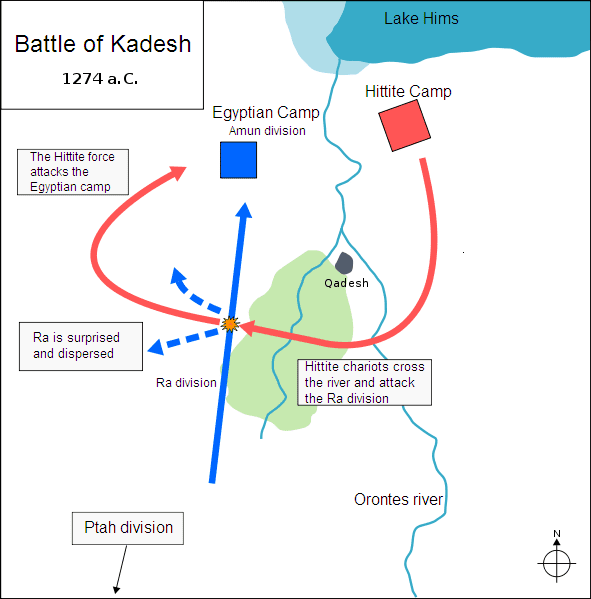
The surprise attack put the Egyptians on the back foot and Ramesses retreated to regather his forces. The Hittite army believed this was a sign of their imminent victory and relaxed their attack, leaving the divisions vulnerable. The regathered Egyptian divisions launched a counterattack and drove the Hittites back towards the river away from the Egyptian camp. Despite this successful attack on the battlefield, Ramesses could not capture the city of Kadesh as Muwatalli had used his remaining forces to fortify the city.
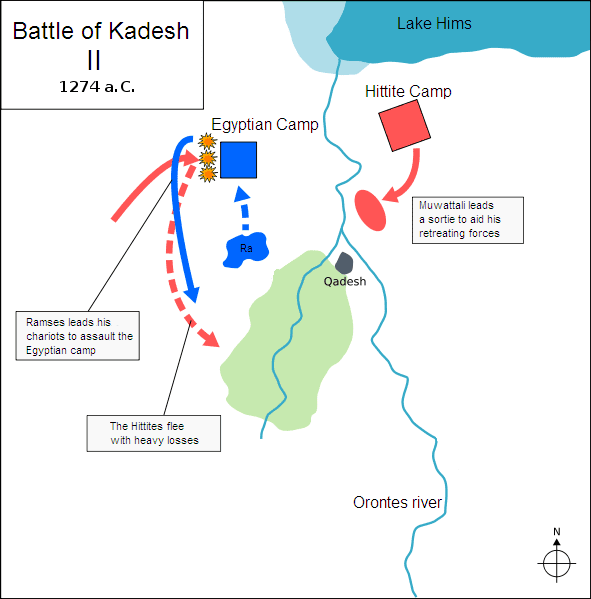
Both sides claimed victory – the Egyptians for winning the battle, and the Hittites for retaining control of Kadesh – with historians still in disagreement today about whether there was an outright victor or a draw.
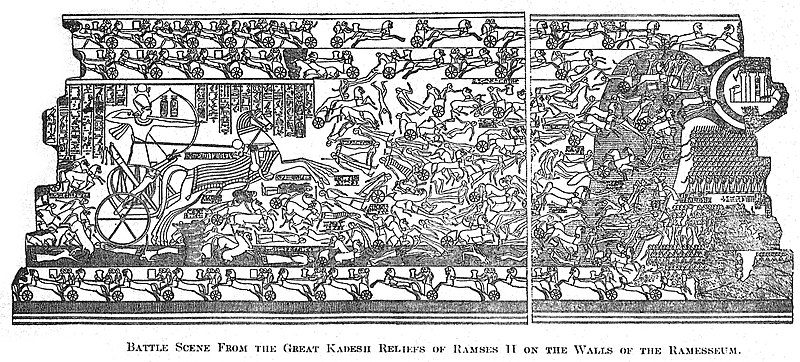
An Agreement of Peace
With no clear victor, border conflicts continued for several years. Fifteen years after the battle, the Egyptians and Hittites signed a treaty to end the long war between the two groups. Known as the Eternal Treaty (or the Treaty of Kadesh), this agreement is the first of its kind in history, with surviving documents from both sides. It was written in Akkadian; the international language of the time.
The treaty between Ramesses II and Hattusili III (new king of the Hittites) begins with a declaration of peace:
“It is concluded that Reamasesa-mai-amana , the Great King, the King (of the land of Egypt) with Hattusili, the Great King, the King of the land of Hatti, his brother, for the land of Egypt and the land of Hatti, in order to establish a good peace and a good fraternity forever among them.”
They made a commitment to end all hostilities and mutually discuss borders, creating defined territories for each kingdom. Ramesses II and Hattusili III formed an alliance between the kingdoms and assured aid in the event of an invasion by external forces. The treaty concludes with a call to the gods of Hatti and Egypt to bear witness to their agreement.

The features of this treaty are remarkably similar to peace treaties in modern history. It mentions issues common across modern treaties: a permanent resolution of hostilities, the identification of borders, and the repatriation of refugees. The treaty is also similar in format. It begins without specific reference to the battles, but a promise of peace. Like modern treaties, it contains separate clauses and ends with a declaration of the consequences of breaking the treaty – in this case, punishment from the Gods:
“They who do not observe the words that are in this silver tablet, the great gods of the country of Egypt as well as the great gods of the country of Hatti will exterminate their houses, their country and their servants.”
Though it is not the first recorded battle in history, it is certainly the most well-documented, providing a detailed account of the characteristics of ancient warfare. Its conclusion – the first ‘international’ peace treaty in history and a window into ancient diplomacy – highlights the Battle of Kadesh as a vital event in the history of ancient warfare, and in ancient history as a whole.
Articles You May Also Like
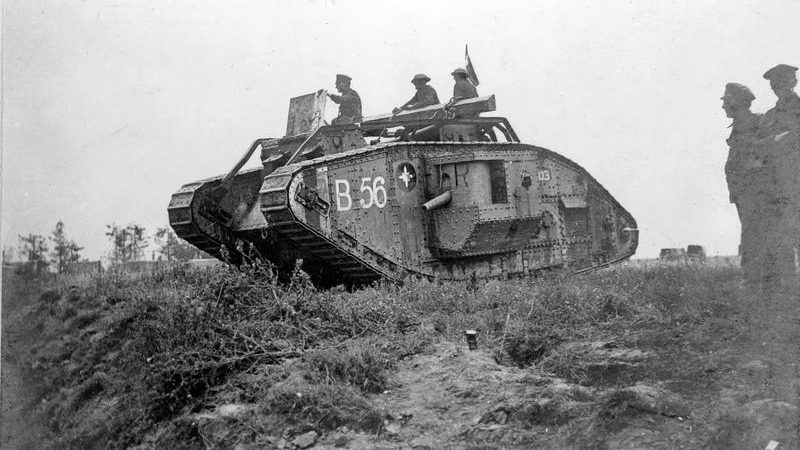
General History Quiz 45
The History Guild Weekly History Quiz.See how your history knowledge stacks up. Have an idea for a question? Submit it here and we’ll include it in a future quiz! If you would like an invite to future history quizzes please enter your details below. Subscribe * indicates required Email Address * First Name Last Name […]


